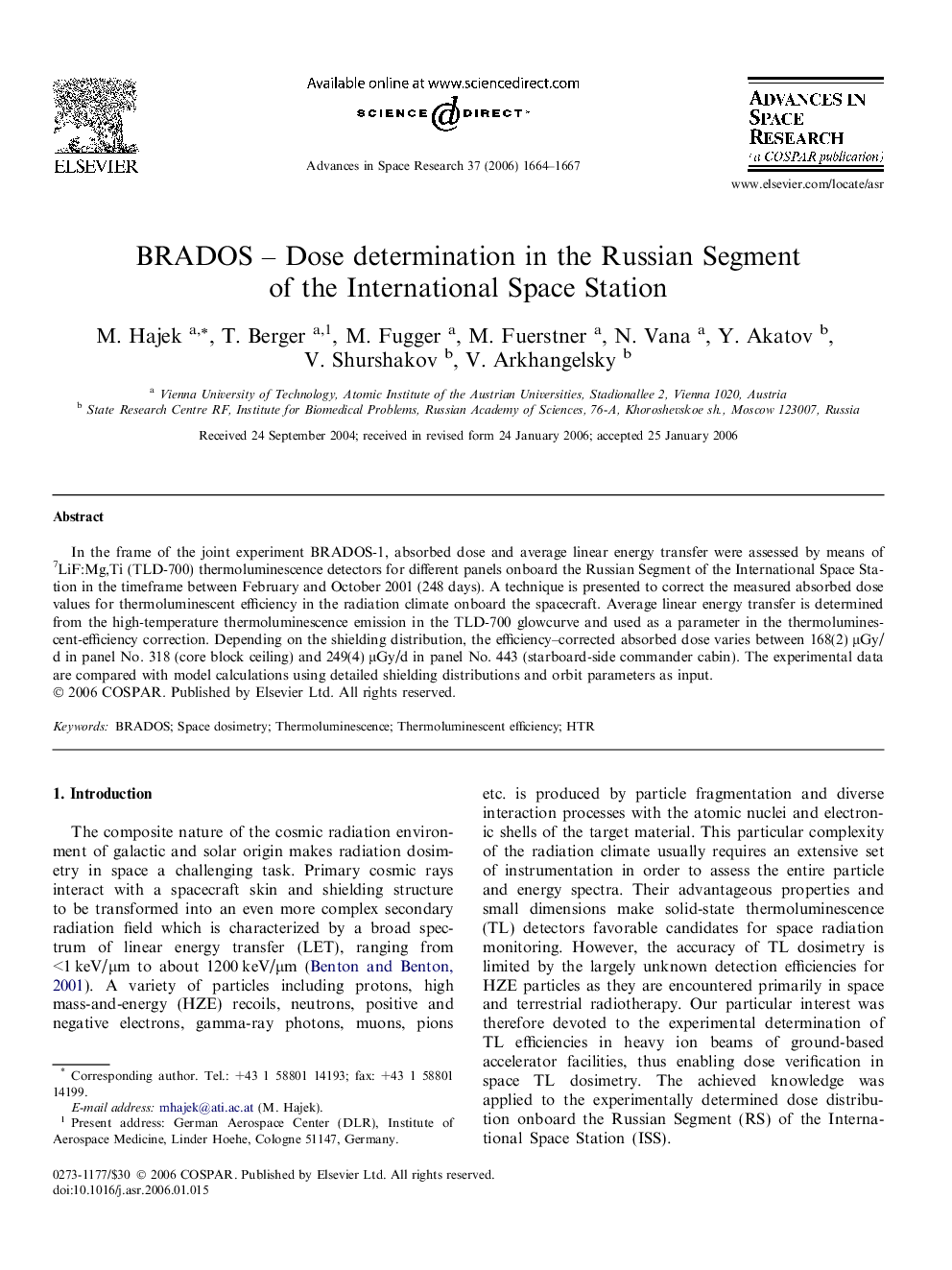| Article ID | Journal | Published Year | Pages | File Type |
|---|---|---|---|---|
| 1768697 | Advances in Space Research | 2006 | 4 Pages |
In the frame of the joint experiment BRADOS-1, absorbed dose and average linear energy transfer were assessed by means of 7LiF:Mg,Ti (TLD-700) thermoluminescence detectors for different panels onboard the Russian Segment of the International Space Station in the timeframe between February and October 2001 (248 days). A technique is presented to correct the measured absorbed dose values for thermoluminescent efficiency in the radiation climate onboard the spacecraft. Average linear energy transfer is determined from the high-temperature thermoluminescence emission in the TLD-700 glowcurve and used as a parameter in the thermoluminescent-efficiency correction. Depending on the shielding distribution, the efficiency–corrected absorbed dose varies between 168(2) μGy/d in panel No. 318 (core block ceiling) and 249(4) μGy/d in panel No. 443 (starboard-side commander cabin). The experimental data are compared with model calculations using detailed shielding distributions and orbit parameters as input.
